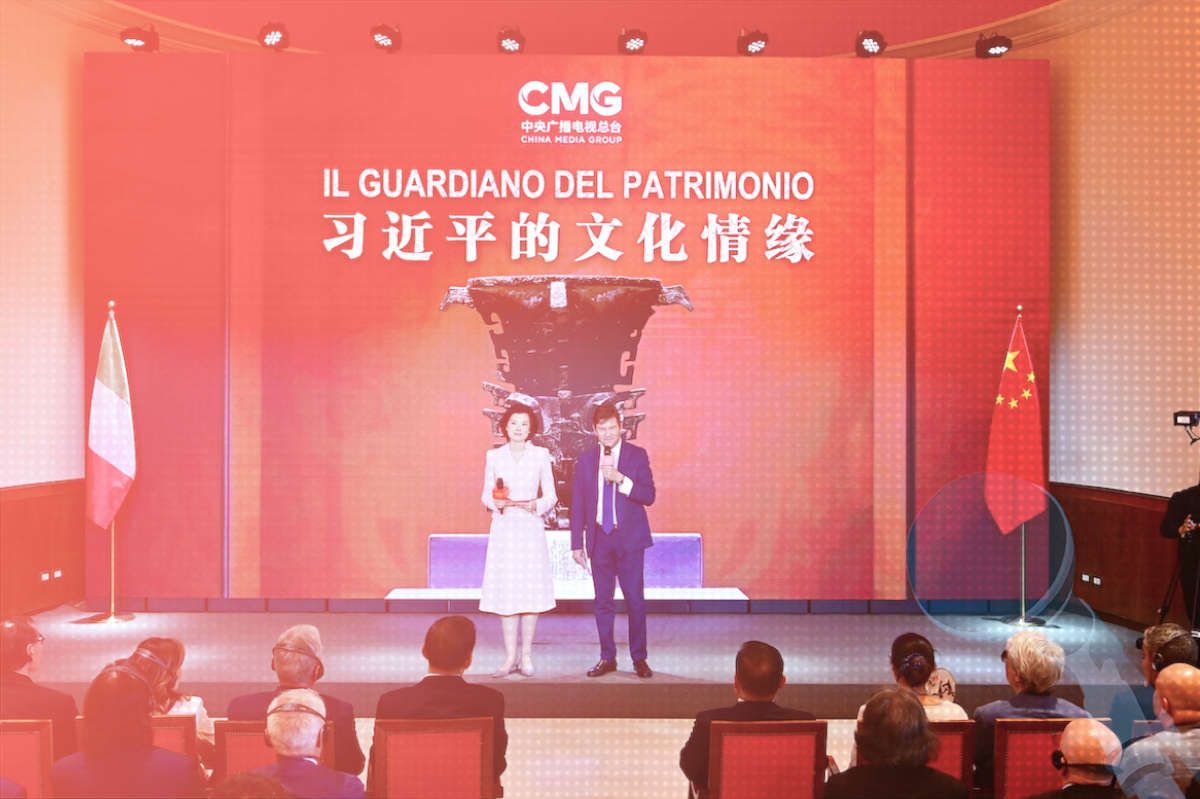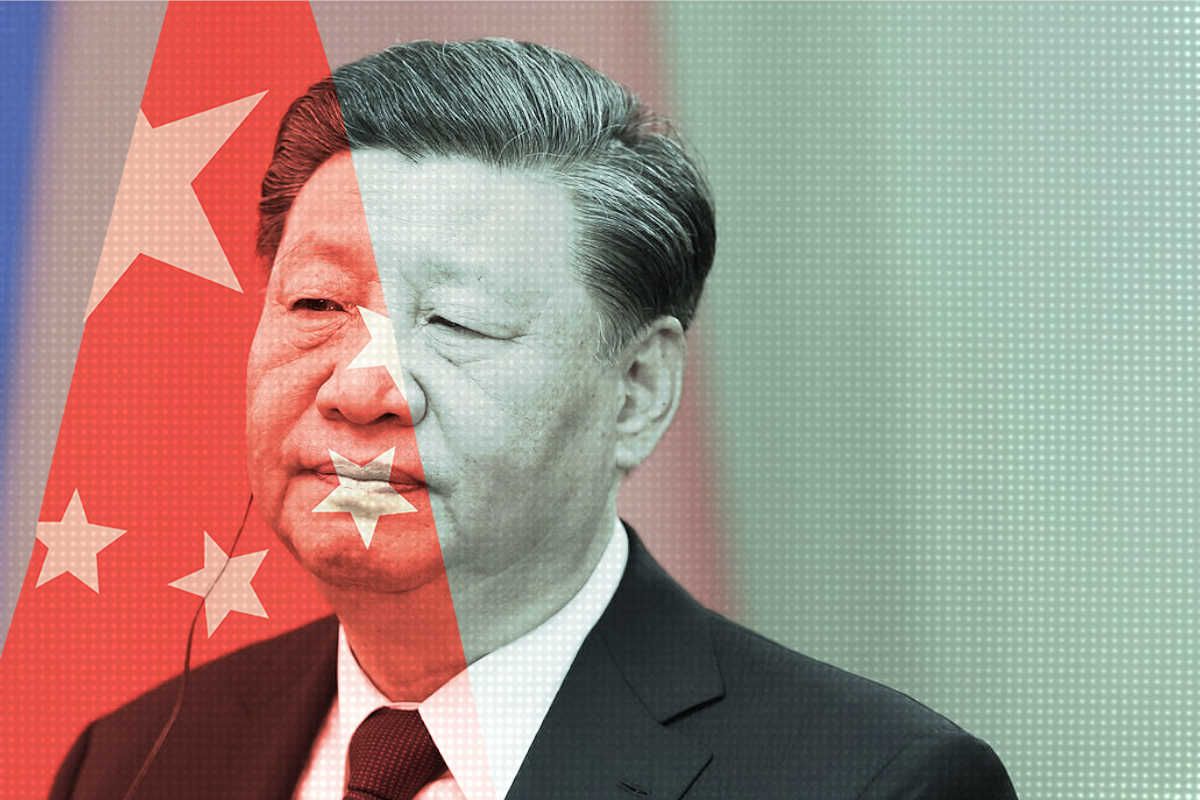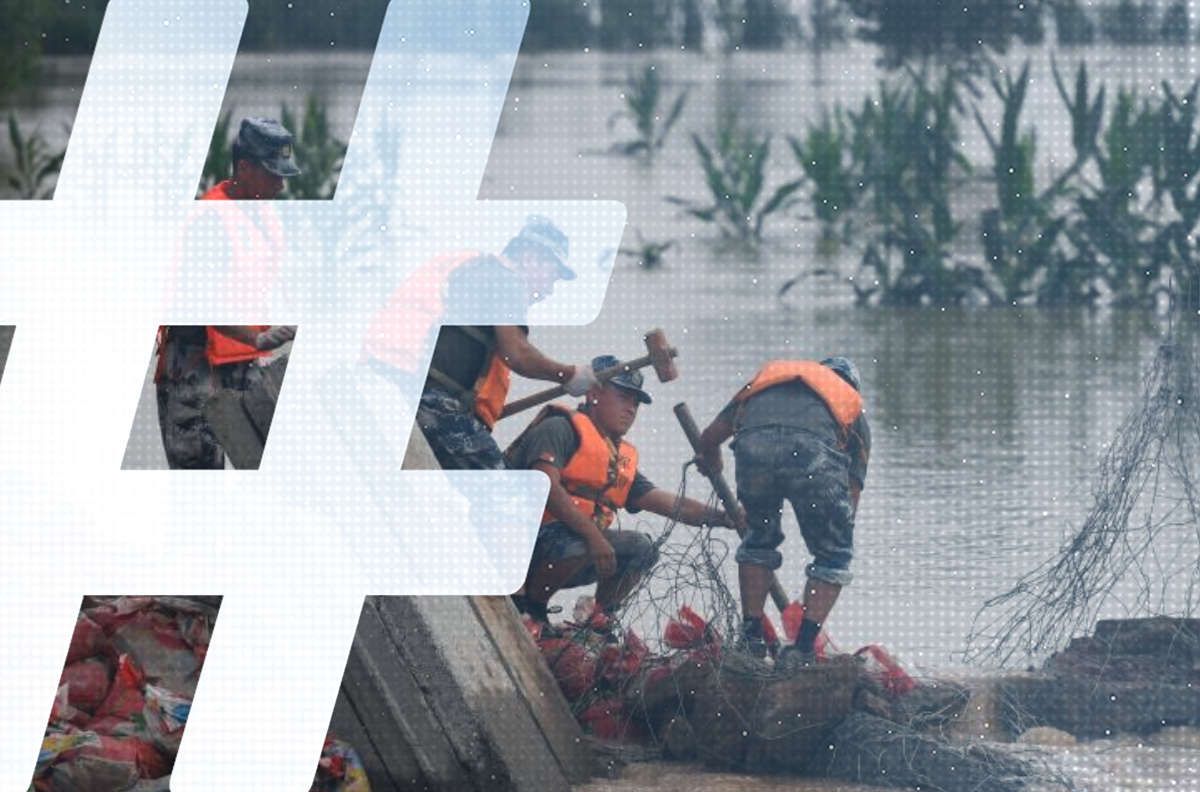Headlines and Hashtags
A flood of positive news in China
As we approach the critical one-week anniversary of the floods in Beijing last Saturday that claimed at least 77 lives, according to the latest official numbers — and as Chinese continue to heap criticism on the government via social media — China’s propaganda leaders are moving aggressively to contain negative coverage.
On July 22, China’s Central Propaganda Department sent down an order instructing news media to “reduce the number of reports on Beijing’s flood disaster, uphold positive reporting, and not engage in news reporting or editorials that reflect back.” Reflecting back refers in particular to coverage that asks harder questions — such as whether the response by the government was quick enough, or whether enough was done to build up essential infrastructure.
In the intervening days, authorities have actively enforced these propaganda directives. Eight pages of special flood-related coverage planned for yesterday’s edition of Southern Weekly were killed by officials. Images of proofs of some of the deleted pages were shared on social media, but quickly removed by web censors.
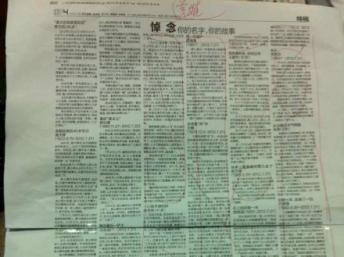
Searches for “Southern Weekly” on Sina Weibo today returned the boilerplate warning: “According to relevant laws, regulations and policies, search results for ‘Southern Weekly’ cannot be shown.” Even more interesting, searches combining the keywords “Southern Weekly” and “proof” returned today’s official Weibo coverage from People’s Daily commemorating those who died in the flooding:
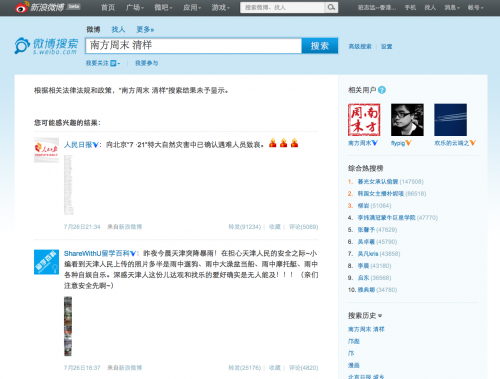
As our deleted posts archive at the Journalism and Media Studies Centre shows, microblog posts critical of the government’s handling of the floods have been actively and constantly removed from Sina Weibo. Here are just a handful:
Example Deleted Weibo Flood Post 1
Example Deleted Weibo Flood Post 2
Example Deleted Weibo Flood Post 3
Example Deleted Weibo Flood Post 4
Beijing propaganda authorities even reportedly sent out a specific order for the wholesale deletion of “Totem,” a blog commentary on the Beijing floods by well-known writer Li Chengpeng (李承鹏) that was shared widely across Chinese social media.
But what exactly does it mean for Chinese media to “emphasize positive news“? And how does this play out in practice? Here is a brief snapshot of today’s warm and friendly coverage.
At Beijing Announcements (北京发布), the official microblog of the information office of the Beijing government, internet users are treated to a slideshow of positivity. Children happily playing in front of temporary shelters, soldiers from the People’s Liberation Army clearing mud away with their bare hands.
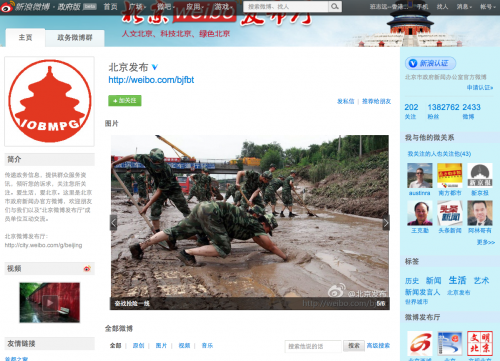
One of the stories on page A12 of today’s edition of The Beijing News, “‘Suffering Hero’ Smiles as He Receives His Disaster Relief” (领到救灾物资 “委屈英雄”笑了), tells the story of Zhao Lupo (赵露泼).
A migrant worker from Anhui province, Zhao Lupo is called “the wronged hero,” a reference to suggestions in news coverage earlier this week that Zhao, who acted commendably to help others in the midst of the floods, had been denied relief supplies from the village where he lived because he is not a local villager — which is to say he does not have a local hukou [See this related piece from China Labour Bulletin].
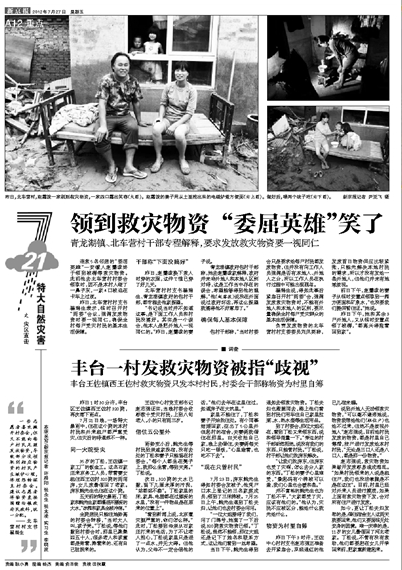
Local village officials have denied discriminating against non-locals — who would generally vastly outnumber locals in such places — and the article in The Beijing News seems to suggest things are all patched up as Zhao, smilingly, receives the relief that is his do. This is an interesting case of a slightly more ambiguous “positive” news story, a smile with just a hint of trouble. But the message is that all is well now, that it was all a misunderstanding.
A story running vertically to the right of the page opposite this one is a brazen feel-good story, that of the “golden haired” dog “Wei Wei” (未未), who helped retrieve items from the flood waters.

The positive stories continue in the Beijing Times, like The Beijing News a former national-level newspaper that transferred to the control of the Beijing city leadership last year. The front page of the Beijing Times, it should be noted, is more provocative than that of its Party counterpart, the official Beijing Daily.
The latter, as you can see below, does place news of the revised death toll of 77 in the center of the page, but it is squeezed in among news about increased “stability preservation” ahead of the 18th Party Congress and the resolute action of leaders to increase disaster relief. Crucially, the main headline at center emphasizes that this was a “natural disaster”, or ziran zaihai (自然灾害).

Additionally, an emotional piece of propaganda under the news report at center on the revised death toll calls for remembrance with this opening line: “The list of those who died in the large-scale natural disaster on July 21 has been released. Let us express our profound condolences to our brethren who were lost, and our highest esteem to the heroes who gave their lives!”
The front-page treatment at the Beijing Times is strikingly different. The whole page is dominated by the names of those who died in the recent floods, set off by rectangular boxes. At center, the bold black headline “77 Dead.”
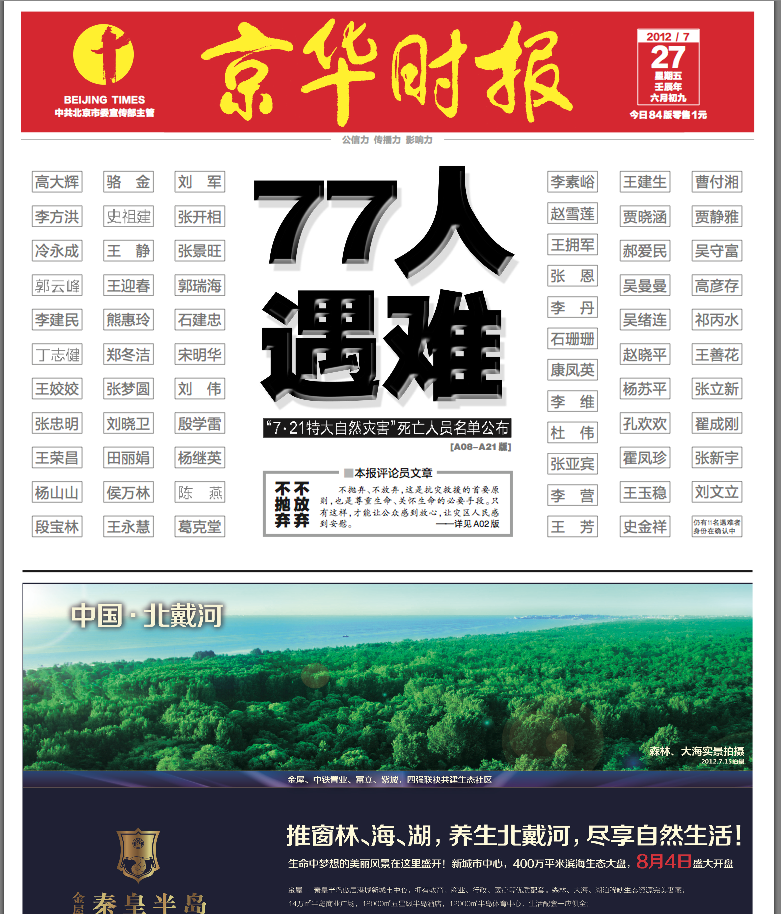
The bold front-page layout is about as far as the Beijing Times deviates from the official playing of the flood story, however. A story on A16 bears the almost comical headline: “That Mountain * That Person * That Dog.” It is like a pointing finger that says: “Don’t look over there at those negative things — look here at all of these positive and uplifting stories.”
On July 21, rainfall in the district of Fangshan approached level not seen in 500 years, resulting in three types of natural disasters, high water levels, flash flooding and mudslides. Economic damage is estimated at 6.1 billion yuan, and 800,000 people were affected.
In this heartless natural disaster, some people lost their homes, others lost their loved ones. Perhaps they have felt despair and terror, but seeing those surging acts of love, their pain will lessen substantially.
The typically daring Southern Metropolis Daily, down in the southern city of Guangzhou, carries nothing whatsoever about the floods on its front page today. The top story is a call by Guangdong’s top leader, Wang Yang (汪洋), for cities in the province to beef up their e-commerce platforms. Coming second is the news that Gu Kailai, the wife of ousted Chongqing leader and prominent “princeling” Bo Xilai, has been formally charged in the murder of British national Neil Heywood.

On Page 2 of the paper, a soft-gloved editorial attempts to push against controls on the flood story, saying that “openness should be the rule, and secrecy the exception.” A second opinion piece bears the headline: “The Number of Dead is Not ‘A Sensitive Issue’“.
News of the adjusted death toll is pushed back to page 6 at Southern Metropolis Daily, buried in the middle of nine pages of advertising. This flood of advertising pages front-loading the newspaper could suggest that other planned reports were pulled and replaced with advertising.
Finally, on page 14, the newspaper runs the full Xinhua News Agency release on the adjusted death toll.
Tomorrow, we can probably anticipate more overwhelming positivity. Black news pages of commemoration, but little or no real exploration.














